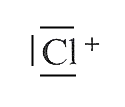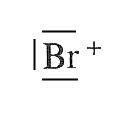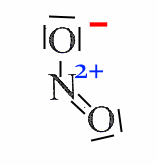











Hückel Rule: The aromatic systems with 2n + 2 π electrons are particularly stable. With 2 · 1 + 2 = 6 π electrons, benzene falls under the rule.
- X+ is a reagent that can perform an electrophile attack .
 - The attack removes 2 electrons from the aromatic system, Hückel's rule is no longer verified: stability is compromised.
By splitting off H+, 2 electrons are added to the aromatic system: the substituted derivative has regained its stability!
- The attack removes 2 electrons from the aromatic system, Hückel's rule is no longer verified: stability is compromised.
By splitting off H+, 2 electrons are added to the aromatic system: the substituted derivative has regained its stability!
 Formation: Chlorine and Aluminium Chloride
Formation: Chlorine and Aluminium Chloride

 Formation: Bromine und Iron(III) Bromide
Formation: Bromine und Iron(III) Bromide

 Formation: Concentrated nitric acid and concentrated sulfuric acid
Formation: Concentrated nitric acid and concentrated sulfuric acid

 Formation: Chloroalcane (or Organic acid chloride) and Aluminium Chloride
Formation: Chloroalcane (or Organic acid chloride) and Aluminium Chloride
 Here R+ = CH3CH2(Ethylium)
Here R+ = CH3CH2(Ethylium)
 Formation: In the fuming sulfuric acid (oleum)
Formation: In the fuming sulfuric acid (oleum)
